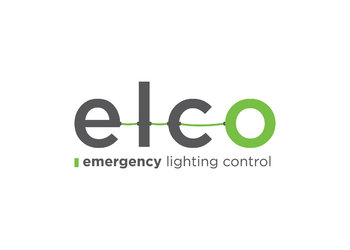WHAT IS THE EMERGENCY LIGHTING?
Emergency lighting is a type of secondary lighting that activates immediately, independent of a generator system, when the usual lighting system is disabled due to emergencies involving events such as earthquakes, fires, terror attacks, sabotage, or power outages. Emergency lighting systems allow for the safe evacuation of people from a building. The main purpose of emergency lighting systems is to prevent loss of life by making safe evacuation possible.
They aid in the swift and safe evacuation of people from buildings by indicating clear exit routes that prevent them from encountering obstacles, suffering injuries, panicking, or assembling in large crowds. Emergency lighting systems also make fire alarms, fire extinguishers, and first-aid kits readily visible, thereby helping to prevent accidents in hazardous environments. “Emergency lighting is not needed under normal cicumstances. However, it must work as required in emergencies. If it doesn’t, then lives are put at risk.”
The purpose of emergency lighting is to provide security lighting in certain areas by automatically switching on the system when the mains failure. The purpose of emergency escape lighting is to point the way to a safe exit from a certain area and/or building when the mains failure. The purpose of escape route lighting is to facilitate a safe exit from a certain area and/or building by providing signposts that use appropriate visuals on emergency escape routes and specific locations, as well as to make the locations of fire extinguishers and safety equipment more visible.
The purpose of open area (anti-panic) lighting is to lessen the likelihood of mass panic and to make it possible for people to safely access escape routes by providing appropriate visual conditions and signposts. The purpose of high risk task area lighting is to contribute to the safety of people working under hazardous conditions by facilitating the correct shutdown procedures that should be followed in the event of evacuation from a certain area and/or building. In most cases, buildings will require a wide range of emergency lighting types. Risk assessments must be carried out to determine the correct emergency lighting set-ups and identify the locations and areas that will require illumination.
The strategic placement of emergency lighting luminaires and emergency exit luminaires signposting exit routes from buildings can help mitigate fear and confusion during emergencies. In such cases, it is vital that exits are clearly marked and visible.
The following definitions pertain to terms used in emergency lighting design, configuration, utilisation, and maintenance standards.
Escape route: A route that leads to a safe location during emergencies.
Emergency escape route lighting: A type of emergency lighting that makes it possible for escape routes to be clearly identifiable and safely used during emergencies.
Open area (anti-panic) lighting: A type of emergency lighting intended for venues or buildings with an area of more than 60 square meters, as well as escape route areas or smaller areas that are high-risk because of the large number of people who may congregate there.
Emergency exit: An exit used in case of emergencies.
Final exit: The point at which an escape route terminates. Maintained emergency lighting luminaire: A type of emergency lighting luminaire system in which emergency lights operate with the mains supply and also when the mains failure.
Non-maintained emergency lighting luminaire: A type of emergency lighting luminaire system in which emergency lights are switched on only when the mains failure.
Emergency rated duration: The duration of emergency lumen output (in hours) as declared by the manufacturer.
High risk task area lighting: A type of emergency lighting system that provides lighting for the safety of people working in potentially hazardous areas or situations and which makes it possible for the correct shut-down procedures to be followed for the safety of operators and others in the facility.


